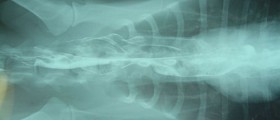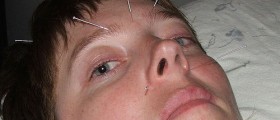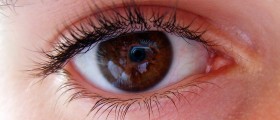
Myasthenia gravis is an autoimmune disease which typically features with improper transmission of signals from nerves to muscles. Ocular myasthenia gravis is only one type of the disease. In ocular myasthenia gravis the symptoms and signs of the disease are related to eye muscles and muscles of the eyelids. The leading symptom of ocular myasthenia gravis is muscle weakness. It tends to intensify during activity and may improve after rest.
Ocular myasthenia gravis affects both genders. Still in women the disease tends to occur before the age of 40 while in men it usually occurs after the age of 60.
Causes of Ocular Myasthenia Gravis
In this autoimmune disease antibodies attack and destroy acetylcholine receptors located at the neuromuscular junction. By destroying these receptors signals cannot reach and stimulate them properly and the final result is lack of muscle contraction. The auto antibodies actually attack body's own cells not recognizing them. There are certain triggers which are definitely related to the onset of the disease but scientists have not identified them yet.
Symptoms of Myasthenia Gravis
The most prominent characteristic of the disease is noticeable weakness of the eye muscles. People suffering from myasthenia gravis experience this weakness it they are active for longer period of time and especially if their eyes are under excessive strain. The upper eyelids drop and the vision becomes blurred. In some patients the symptoms are not so intensive while other patients have to deal with more severe symptoms and have more difficulties.
Diagnosing Myasthenia Gravis
In initial stages of the disease the symptoms are not so severe. Therefore, patients do not report mild cases of muscle weakness until they intensify and start to bother them more. So it may happen that the diagnosis is set one or two years after the onset of the disease. The doctor takes into consideration patient's medical history and performs physical and neurological examinations. Additional tests for diagnosing myasthenia gravis are blood test, Edrophonium test, nerve conduction study, single fiber and electromyography.
Treatment for Ocular Myasthenia Gravis
People suffering from ocular myasthenia gravis are basically treated with medications, surgically or with assistive devices. Medications for this form of the disease include anticholinesterase agents such as neostigmine and pyridostigmine. These drugs are highly effective in improving neuromuscular transmission and they also increase the muscle strength. One more group of medications prescribed in case of ocular myasthenia gravis includes immunosuppressive agents (prednisone, Cyclosporine etc.).
Thymectomy is surgical removal of the thymus gland. This gland is associated with the disease and its removal may improve symptoms, cure ocular form of the disease and re-balance the immune system. Thymectomy is usually indicated in patients suffering from severe form of the disease.
Assistive devices that may help include eyelid crutches (keep the eyelids open), eyelid tape (keeps the eyelids open), eyeglass prisms and an eye patch to one eye (helps with blurred vision).

















Your thoughts on this
Loading...